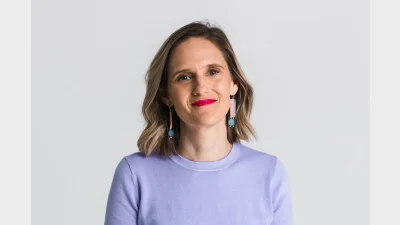Will the super merger dust settle?



With so much merger and acquisition (M&A) activity in the superannuation space, challenges and delays in its implementation are indicating a slowing pace ahead.
Australia’s $3.5 trillion super industry is continuing to undergo fundamental shifts regarding regulatory pressures, greenwashing fears, changing investment allocations, growing member expectations, and, notably, increased consolidation.
However, with such a fast pace of merger activity, some prompted by the Your Future, Your Super (YFYS) performance test, there are now concerns it will be slowing down.
Back in October 2021, Margaret Cole, executive board member at APRA, commented in a speech to the Financial Services Council (FSC) that the number of funds was so wide that it was “detrimental” to members.
At the time, the prudential regulator stated that it expected anything less than $30 billion in funds under management (FUM) would be too small to compete.
According to JP Morgan’s latest Future of Superannuation report, there were 137 funds in March 2023 compared to 174 in September 2021, a reduction of 37 funds either from merging or closing.
Since the start of 2022, there have been at least 13 super mergers with the largest being the merger of QSuper and Sunsuper to create Australian Retirement Trust in February 2022. Other large mergers include Hostplus acquiring both Statewide Super and Maritime Super and HESTA acquiring Mercy Super.
Not content with the first merger, ART has also gone on to acquire Australian Post Superannuation Scheme, signed a successor fund transfer with Woolworths Group and Endeavour Group and is in talks with AvSuper and Alcoa Super.
The multiple mergers by one fund have led to discussions of the so-called ‘mega funds’ in the space, defined as a super fund with more than $100 billion or more in assets. According to the latest KPMG Super Insights report, these have risen from one in 2015 to seven in 2022, consisting of three industry funds, one public sector fund, and three retail industry super funds that represent 58 per cent of the total non-SMSF super industry.
7 largest super funds
- AustralianSuper
- ART
- Insignia
- Aware Super
- UniSuper
- AMP
- CFS
Source: KPMG, 2022
In particular, KPMG has forecast both ART and AustralianSuper could reach $1 trillion in assets under management by 2040, up from $240 billion and $300 billion, respectively.
The JP Morgan report forecast the volume could fall further in the future to fewer than 75 by 2025 and a quarter of the executives surveyed believed it could be as low as 50.
Merger challenges
While the Australian Prudential Regulation Authority (APRA) may have been encouraging smaller funds to merge to create larger funds with scale benefits, funds are encountering ‘on the ground’ problems when it comes to enacting this.
According to Natixis Investment Managers in its Global Retirement Index (GRI), the firm noted these benefits to members may also incur practical challenges.
“The pace of mergers has begun to slow recently as the purported benefits of larger funds for members have come under closer scrutiny. This comes alongside more challenges as funds with disparate memberships, investment philosophies, etc struggle with the practical matters of merging,” said Natixis.
In particular, merging funds may grapple with disparate memberships, differing investment philosophies, and maintaining member satisfaction across a larger member base. Others may take time to find a suitable home after failing the Your Future, Your Super performance test.
The scrapped merger between AvSuper and Commonwealth Super Corporation (CSC) was an example of this.
The two entered into a memorandum of understanding (MOU) in May 2022, however, in February 2023 it was concluded the process would be too complex to enact and AvSuper has since signed a deal with ART.
The lengthy due diligence process also takes time, as seen with the merger between Vision Super and Active Super. The funds first signed an MOU in June 2022, but it took a full year before they signed a heads of agreement in June 2023, announcing Stephen Rowe, current chief executive of Vision Super as the CEO of the combined fund, and the merger is still yet to be completed.
Lisa-Marie McKechnie, partner at law firm Piper Alderman, said she had encountered funds taking time to merge and that the regulator, while pushing for consolidation, is frustrated by the delays.
“The performance test outcome process has resulted in consolidation, smaller funds moving into larger funds, and it’s meant the merging and implementation of different systems, which is difficult at the best of times, particularly where you’ve got admin systems, investment platforms that are different, and then of course the blending of resources from different funds – that takes a lot of time to get right,” she said.
“While the regulators have been patient with the funds consolidating, because it’s been driven by their focus on member outcomes, their patience is running out where those systemic issues remain. They are very much focused on showing they will take enforcement action.”
Other medium-sized funds such as Equip Super and NGS Super said they see no need to merge with a larger fund and have highlighted there are alternative benefits that come from being a smaller player.
Speaking to Super Review, Equip CEO, Scott Cameron, said: “Size in itself doesn’t create scale. It’s really important that we look for the right opportunities. Everything we look at is under the lens of our current membership, it has to be in their best financial interests.”
“The industry has been grasped by merger fever and I don’t blame anybody for thinking that way because it probably makes sense for a lot of funds to think about mergers. But for NGS, we know what we do really well and that’s personalised advice for our members and understanding their needs from the beginning of their careers until they head into retirement and beyond,” NGS Super CEO, Natalie Previtera, told Super Review.
“Small and medium funds have a role to play in maintaining that intimacy, and the bigger you get, the more challenges you have with staying close to your members and being able to commit to personal service.”
If a fund is looking to merge, KPMG said the capabilities required for a successful merger are:
- Degree of flexibility with partner fund
- Identification of suitable partner
- Due diligence
- Running the tender
- Running the SFT/integration project
- Successful integration of teams moving across
- Delivering the business plan’s identified benefits
“Mergers will continue to transform the shape of the industry towards fewer, larger funds. There will also be room for small, boutique funds with a clear differentiating value proposition,” concluded KPMG in its 2023 Super Insights report.
Navigating the path through these teething problems could also benefit other nations as Australia’s superannuation system leads the way in retirement finances.
“The path through these challenges for funds that succeed could help inform the structural decisions of other nations seeking to replicate the most successful aspects of the Australian system,” the Natixis IM report added.
Recommended for you
From government consultations to ASIC reviews, Super Review has put together a timeline of how super funds’ handling of member complaints has grown in prominence in the last 12 months.
Speaking to Super Review, Christina Hobbs shares why the superannuation industry needs to better service female members and how Verve Super implements an ethical investment approach.
Multiple super funds are in the process of recruiting a new chief executive as consolidation causes a dramatic decline in the number of C-suite roles.
In an interview with Super Review, Vision Super chief executive Stephen Rowe has shared his thoughts on the Active Super merger and the challenge of keeping up with ever-changing regulation.













